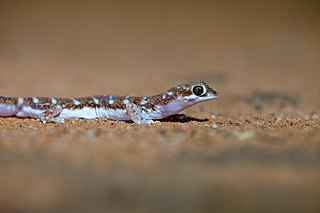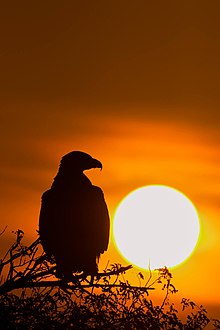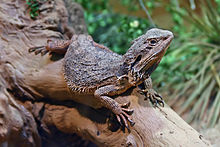
A circadian rhythm, or circadian cycle, is a natural oscillation that repeats roughly every 24 hours. Circadian rhythms can refer to any process that originates within an organism and responds to the environment. Circadian rhythms are regulated by a circadian clock whose primary function is to rhythmically co-ordinate biological processes so they occur at the correct time to maximise the fitness of an individual. Circadian rhythms have been widely observed in animals, plants, fungi and cyanobacteria and there is evidence that they evolved independently in each of these kingdoms of life.

Chronobiology is a field of biology that examines timing processes, including periodic (cyclic) phenomena in living organisms, such as their adaptation to solar- and lunar-related rhythms. These cycles are known as biological rhythms. Chronobiology comes from the ancient Greek χρόνος, and biology, which pertains to the study, or science, of life. The related terms chronomics and chronome have been used in some cases to describe either the molecular mechanisms involved in chronobiological phenomena or the more quantitative aspects of chronobiology, particularly where comparison of cycles between organisms is required.

Night monkeys, also known as owl monkeys or douroucoulis, are nocturnal New World monkeys of the genus Aotus, the only member of the family Aotidae. The genus comprises eleven species which are found across Panama and much of South America in primary and secondary forests, tropical rainforests and cloud forests up to 2,400 metres (7,900 ft). Night monkeys have large eyes which improve their vision at night, while their ears are mostly hidden, giving them their name Aotus, meaning "earless".

Nocturnality is a behavior in some non-human animals characterized by being active during the night and sleeping during the day. The common adjective is "nocturnal", versus diurnal meaning the opposite.

The blue-tailed day gecko is a diurnal species of gecko, a lizard in the family Gekkonidae. The species is endemic to the island Mauritius. It typically inhabits warm and humid places and dwells on different trees and bushes.

In zoology, a crepuscular animal is one that is active primarily during the twilight period, being matutinal, vespertine/vespertinal, or both. This is distinguished from diurnal and nocturnal behavior, where an animal is active during the hours of daylight and of darkness, respectively. Some crepuscular animals may also be active by moonlight or during an overcast day. Matutinal animals are active only before sunrise, and vespertine only after sunset.

Torpor is a state of decreased physiological activity in an animal, usually marked by a reduced body temperature and metabolic rate. Torpor enables animals to survive periods of reduced food availability. The term "torpor" can refer to the time a hibernator spends at low body temperature, lasting days to weeks, or it can refer to a period of low body temperature and metabolism lasting less than 24 hours, as in "daily torpor".

An endotherm is an organism that maintains its body at a metabolically favorable temperature, largely by the use of heat released by its internal bodily functions instead of relying almost purely on ambient heat. Such internally generated heat is mainly an incidental product of the animal's routine metabolism, but under conditions of excessive cold or low activity an endotherm might apply special mechanisms adapted specifically to heat production. Examples include special-function muscular exertion such as shivering, and uncoupled oxidative metabolism, such as within brown adipose tissue.
Photoperiodism is the physiological reaction of organisms to the length of light or a dark period. It occurs in plants and animals. Plant photoperiodism can also be defined as the developmental responses of plants to the relative lengths of light and dark periods. They are classified under three groups according to the photoperiods: short-day plants, long-day plants, and day-neutral plants.

Cathemerality, sometimes called "metaturnality", is an organismal activity pattern of irregular intervals during the day or night in which food is acquired, socializing with other organisms occurs, and any other activities necessary for livelihood are undertaken. This activity differs from the generally monophasic pattern of nocturnal and diurnal species as it is polyphasic and is approximately evenly distributed throughout the 24-hour cycle.

The golden spiny mouse gets its name from the reddish-orange spiny fur that covers its body from head to tail. This coarse, inflexible fur is thought to protect it from predation. Aside from the golden fur that covers its head and upper parts, its flanks are yellow and its underside is pale. It has gray legs with pale feet and black soles. It is also described as having a small, but distinct white spot under each eye. It is often found in the wild missing a part or all of its tail because it is able to shed this as a defense mechanism. However, it is not known how this is done, how often it can occur, or under what conditions. It lives an average of three years in the wild. It is omnivorous and feeds on seeds, desert plants, snails, and insects. Living in desert regions, it is a xeric animal that obtains water from the plants that it eats and produces very concentrated urine in order to conserve water. A. russatus is naturally nocturnal, but adapts to being diurnal when it shares a habitat with A. cahirinus.
In the study of chronobiology, entrainment occurs when rhythmic physiological or behavioral events match their period to that of an environmental oscillation. It is ultimately the interaction between circadian rhythms and the environment. A central example is the entrainment of circadian rhythms to the daily light–dark cycle, which ultimately is determined by the Earth's rotation. Exposure to certain environmental stimuli will cue a phase shift, and abrupt change in the timing of the rhythm. Entrainment helps organisms maintain an adaptive phase relationship with the environment as well as prevent drifting of a free running rhythm. This stable phase relationship achieved is thought to be the main function of entrainment.

Jürgen Walther Ludwig Aschoff was a German physician, biologist and behavioral physiologist. Together with Erwin Bünning and Colin Pittendrigh, he is considered to be a co-founder of the field of chronobiology.
Colin Stephenson Pittendrigh was a British-born biologist who spent most of his adult life in the United States. Pittendrigh is regarded as the "father of the biological clock," and founded the modern field of chronobiology alongside Jürgen Aschoff and Erwin Bünning. He is known for his careful descriptions of the properties of the circadian clock in Drosophila and other species, and providing the first formal models of how circadian rhythms entrain (synchronize) to local light-dark cycles.

Diplodactylus vittatus, commonly known as the eastern stone gecko, stone gecko, and wood gecko, is a species of diplodactylid lizards that occurs in forest, shrubland and arid regions across Australia. It is widespread across the states of Queensland, Victoria and New South Wales, commonly found in dry peripheral bushlands. This gecko can be kept as a pet or seen within zoo enclosures.

Ecological light pollution is the effect of artificial light on individual organisms and on the structure of ecosystems as a whole.

Whether fish sleep or not is an open question, to the point of having inspired the title of several popular science books. In birds and mammals, sleep is defined by eye closure and the presence of typical patterns of electrical activity in the brain, including the neocortex, but fish lack eyelids and a neocortex. Some species that always live in shoals or that swim continuously are suspected never to sleep. There is also doubt about certain blind species that live in caves.
A circannual cycle is a biological process that occurs in living creatures over the period of approximately one year. This cycle was first discovered by Ebo Gwinner and Canadian biologist Ted Pengelley. It is classified as an Infradian rhythm, which is biological process with a period longer than that of a circadian rhythm, less than one cycle per 24 hours. These processes continue even in artificial environments in which seasonal cues have been removed by scientists. The term circannual is Latin, circa meaning approximately and annual relating to one year. Chronobiology is the field of biology pertaining to periodic rhythms that occur in living organisms in response to external stimuli such as photoperiod.

The border beaked gecko is a gecko endemic to Australia in the family Gekkonidae. It is known for its distinctive beak-like snout and ability to camouflage itself in its surroundings.



















